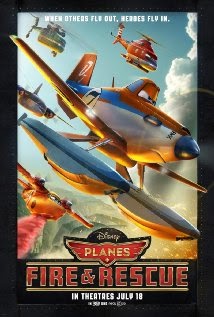I return to the subject now because two big shows are opening nationwide. If you go to see a new film this weekend, chances are it will most be one of these.
First is the widely touted Get On Up, a biopic of the life and career of James Brown, aka the Godfather of Soul. It has been promoted broadly; Mick Jagger is a producer and supervised the music.
The star is Chadwick Boseman, known for his work in The Help and the Jackie Robinson movie, 42. He's said to be fantastic in the James Brown role.
The movie shows Robinson as he was, warts and all, wrote critic Lou Lumenick of the New York Post, who called it "one funktastic musical biopic." Other reviews are similarly upbeat.
This film surely will draw an enthusiastic African-American audience, but, after the flop earlier this summer of Jersey Boys, about musicians who, like Brown, were most famous in the early 1960s, I wonder how broad the interest will be.
Get On Up apparently traces the origins of funk and the earliest signs of rap music to Brown, which may draw fans of more recent trends. And, again, it has the enthusiastic support of Mick Jagger, who acknowledges Brown's influence on his early career. But Jagger is approximately 100 years old now, and James Brown's original fans are getting pretty long in the tooth themselves.
We'll see.

The other new movie is a more offbeat take on a summer blockbuster, Guardians of the Galaxy. It is based on a comic book series with some of Marvel's lesser characters.
The human star is Quill, played by Chris Pratt, the sort of pudgy guy from the Parks and Recreation television show. Critics like the Quill character.
The scene stealers, though, are computer-generated characters. Two often-mentioned ones are Groot, a noble and apparently indestructible tree voiced in a sort of inside-joke way by "actor" Vin Diesel and a gun-toting raccoon whose lines are spoken by Bradley Cooper.
The movie seems to take itself much less seriously than typical sci-fi epics pitting good against evil; it also pulls improbable (okay, even more improbable) rabbits out of hats at challenging plot moments.
To his admitted surprise, Peter Travers of Rolling Stone loved it. "This group of losers is having so much fun shaking their sillies out that you will too," he said.
Many other critics thought Guardians of the Galaxy was rollicking good fun, but their views are not unanimous. Kyle Smith of the New York Post said it "goes by as slowly as a tax audit" and likened it to such unloved science fiction titles as Howard the Duck and Green Lantern.
Again, we'll see.








































